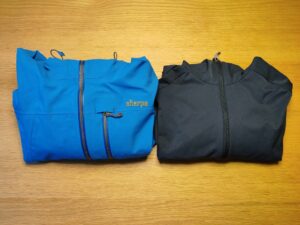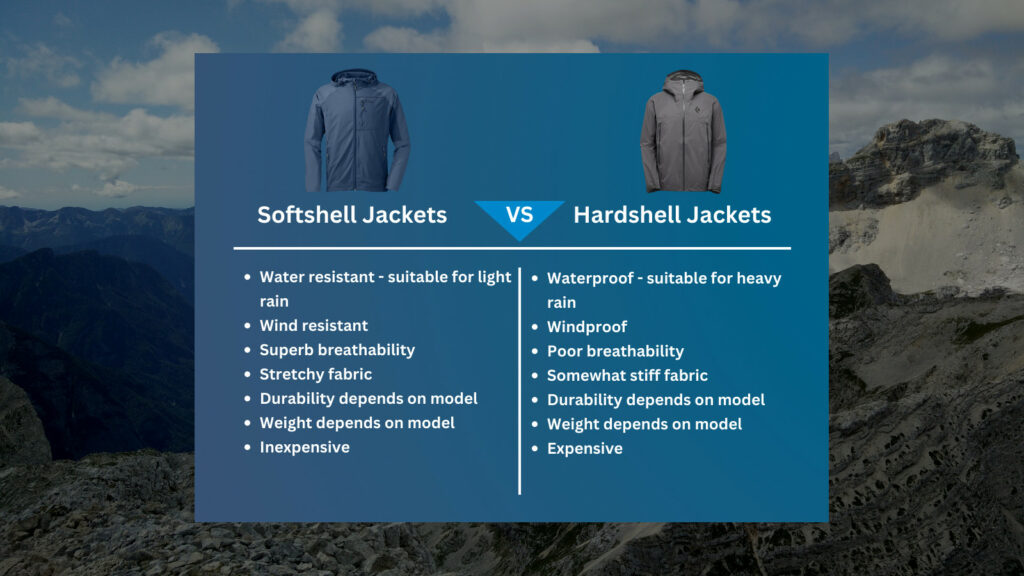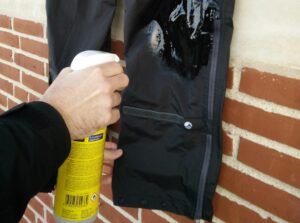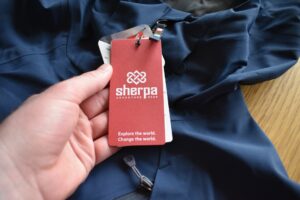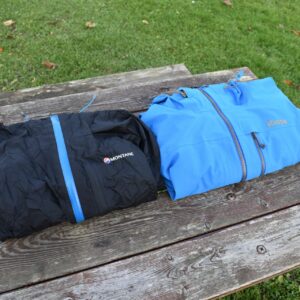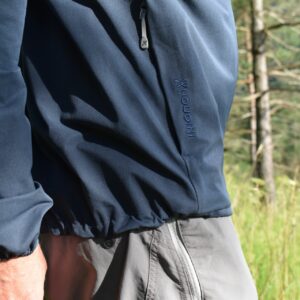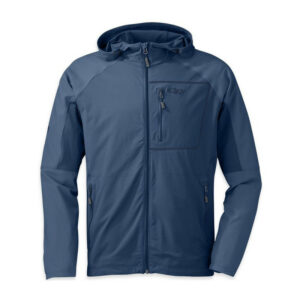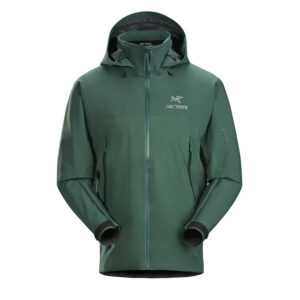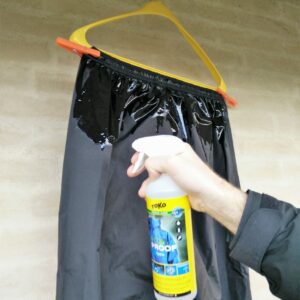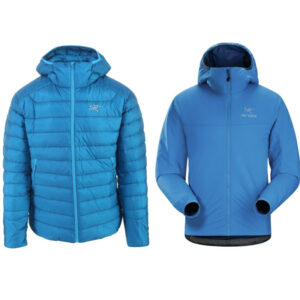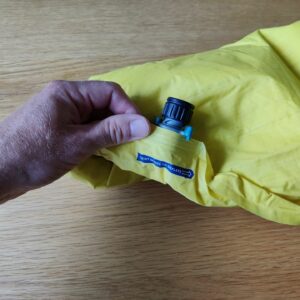If you need a jacket for protection against rain and wind, you can choose between a hardshell or a softshell jacket. While there are many similarities between hardshell and softshell jackets, the two garment types are ultimately made for different weather conditions. They also differ by breathability, weight, drying time, price and more. I own several hardshell jackets (Montane Minimus, Sherpa Makalu etc.) as well as a softshell jacket (Houdini Daybreak) and I always decide which one to wear after checking the weather forecast. Sometimes a hardshell jacket is a better option and other times it makes more sense to wear the Houdini Daybreak softshell jacket. In the following I’ll explain what the differences between softshell and hardshell jackets are and help you choose the right garment for your needs and activities.
Table of Contents:
- Weather Protection
- Breathability
- Comfort and Fit
- Durability and Maintenance
- Weight and Packability
- Price
- Conclusion
Weather Protection
Hardshell jackets provide better protection against rain and wind than softshell jackets. They are made of waterproof/breathable (WPB) fabrics where waterproofness is achieved with a membrane or a coating. A membrane or a coating blocks water droplets from the outside but lets the vapor escape out. All WPB fabrics are also treated with durable water repellent (DWR) so that they don’t absorb the water.
Softshell jackets, on the other hand, are made of DWR treated tightly woven nylon or polyester fabrics. These fabrics don’t feature a water blocking membrane or a coating and are thus not waterproof. Nevertheless, due to the DWR treatment and tightly woven fabric, softshell fabrics provide some level of water resistance.
Softshell jackets also provide inferior wind protection in comparison to hardshell jackets. When I’m wearing my Houdini Daybreak softshell jacket for hiking in very windy conditions or for bike commuting, I often feel the wind chill effect. The jacket definitely doesn’t block the wind as well as my Minimus and Makalu hardshell jackets.
Now you might ask why would anybody even go for a softshell jacket ever? Well, the answer is in the next two sections.
Breathability
Softshell jackets are significantly more breathable than hardshell jackets. Hardshell jackets utilize either a membrane or a coating and that is exactlt what decreases the breathability. Most membranes and coatings do not allow air to pass through at all. They only allow moisture vapor to pass from the inside to the outside. That’s why the breathability for rainwear is measured in grams of moisture the fabric can pass in 24 hours per square meter, called MVTR (Moisture Vapor Transmission Rate). Top-tier hardshell jackets have a MVTR of up to 30.000 g/m2/24 h which still doesn’t match the breathability of softshell jackets. Softshell jackets are more like normal garments. They breathe very well, albeit not as good as for example base layers as they are made of more tightly woven fabrics to block the wind. Therefore, softshell jackets are more suitable for highly aerobic activities and everyday wear than hardshell jackets.
Comfort and Fit

Sotshell jackets are more comfortable than hardshell jackets because they are made of softer fabrics
As the names suggest, softshell jackets are softer and consequently also more comfortable than hardshell jackets. My Houdini Daybreak jacket is made of very soft fabric which feel pleasant to the touch and provides great freedom of movement. Wearing the jacket feels like wearing any other garment.
Hardshell jackets, on the other hand, are usually somewhat stiff, although top-tier models can feel quite a lot like softshell garments. For example, my Sherpa Makalu jacket feels a lot like a softshell jacket. It is slightly stiffer but judging by the feel of the fabric it could easily be mistaken for a softshell jacket. Nevertheless, that’s not the case when it comes to low- and mid-range hardshells. Those are typically stiff, noisy and restrictive at times.
So, in terms of comfort, softshell jackets definitely outperform hardshell jackets.
Durability and Maintenance
Both hardshell and softshell jackets can provide good durability and have a long lifespan. However, hardshell jackets differ a lot in terms of durability. 2.5-layer hardshell jackets are for example usually made of very thin fabrics to be as lightweight as possible. These fabrics require a bit more care while wearing them as they tear easily. On the other hand, 3-layer hardshell jackets are often more durable than softshell jackets. Learn more about different types of hardshell jackets in my article 2.5-Layer VS. 3-Layer Rain Jackets.
In terms of maintenance both softshell and hardshell jackets require reapplying DWR from time to time. I reapply DWR when I see that the garment is no longer repelling the water. Before reapplying the DWR I always wash the garment as DWR treatment won’t work properly unless the garment is clean. If you are in doubt how to wash your hardshell or softshell jacket, you can check out our article How to Wash Outdoor Clothing.
Weight and Packability
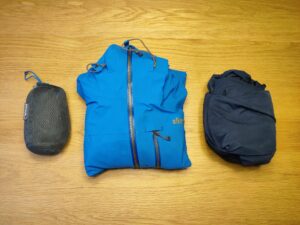
Both softshell and hardshell jackets can pack small. From left to right: Montane Minimus hardshell, Sherpa Makalu hardshell and Houdini Daybreak softshell
Softshell and hardshell jackets vary a lot in terms of weight and packability. Hardshell jackets can weigh anywhere from 7 oz. (200 grams) to 1 lb. 5 oz. (600 grams). 2.5-layer hardshell garments are lighter than more robust 3-layer garments.
High-quality softshell jackets weight from 9 oz. (300 grams) to 1 lb. 12 oz. (800 grams).
Packability is tightly related to the weight of the garment. The lighter the garment, the smaller it packs. If you’re deciding between a softshell and hardshell jacket, weight should not impact your decision. Both softshell and hardshell jackets can be very lightweight. Lightweight hardshell jackets are typically made of 2.5-layer fabrics.
Price
Softshell garments are made of less advanced fabrics than hardshell garments and therefore they are also less expensive. Hardshell fabrics feature membranes or coatings and that significantly increases the cost of production. If you’re buying a top-tier product, chances are that it will use a third-party fabric such as Gore-Tex or eVent which will additionally increases the price. High-quality rain jackets cost more than $200 with top-tier products costing as much as $600. Softshell jackets are cheaper. You can get a great softshell jacket for $120 although some premium models retail for as much as $250.
Conclusion
So, should you buy a softshell or a hardshell jacket? If you need a jacket for activities in rain and strong winds, a hardshell jacket is the obvious choice. A softshell jacket will not provide good enough protection against the elements in such conditions. Nevertheless, for all other conditions a softshell jacket is a more comfortable option. A softshell jacket is an extremely versatile garment that can be comfortably worn in various conditions year-round. It is wind- and water-resistant, breathable and very comfortable to wear due to soft and stretchy fabric. Furthermore, softshell jackets are also less pricy than hardshell jackets. In terms of weight, packability and durability, there are great variation within each garment type, so you can easily find a hardshell jacket which matches a softshell jacket and vice versa
Check out our selections of Best Softshell and Best Hardshell (Gore-Tex) jackets as well.
I’d love to hear about your thoughts on hardshell and softshell jackets. Write them in the comments section below.
